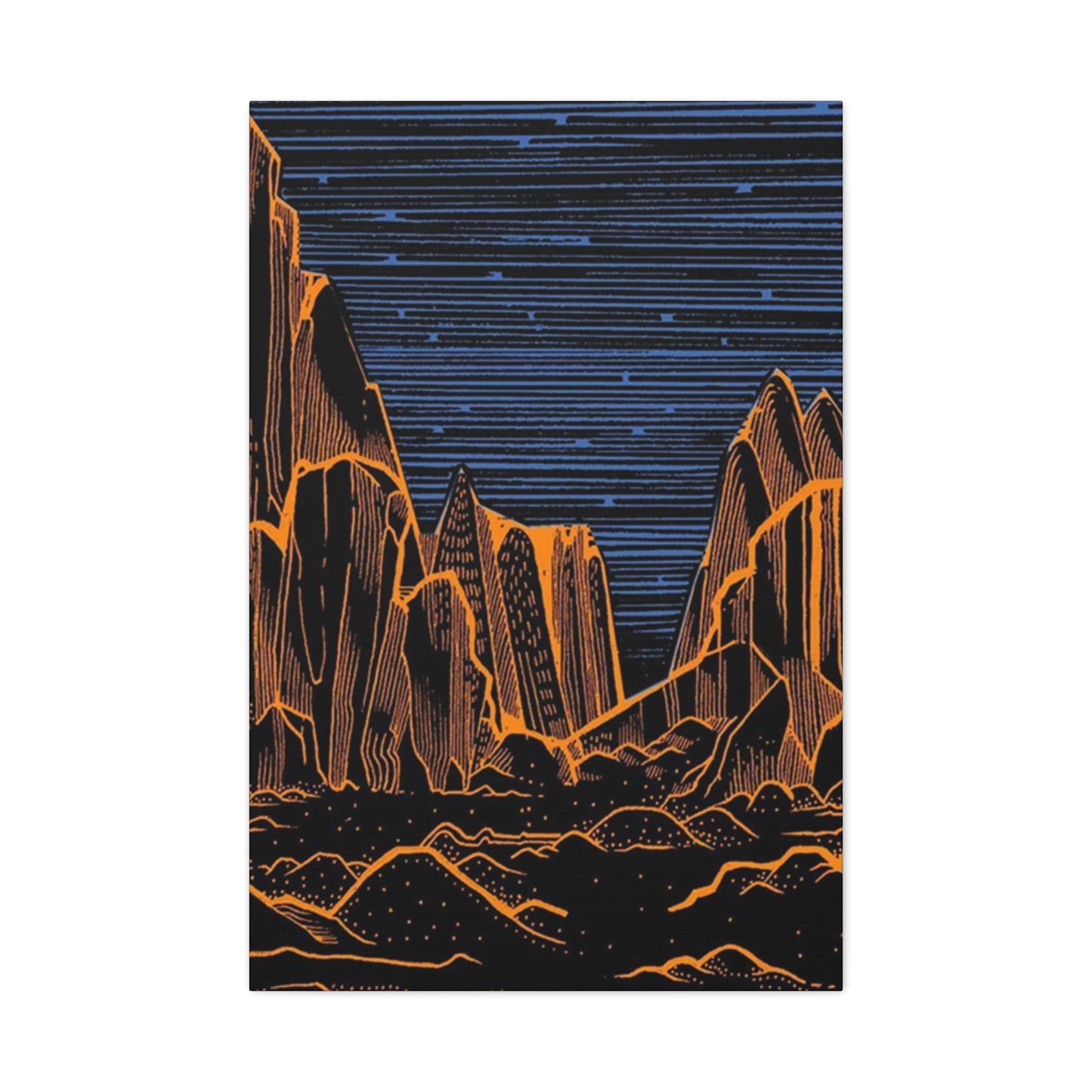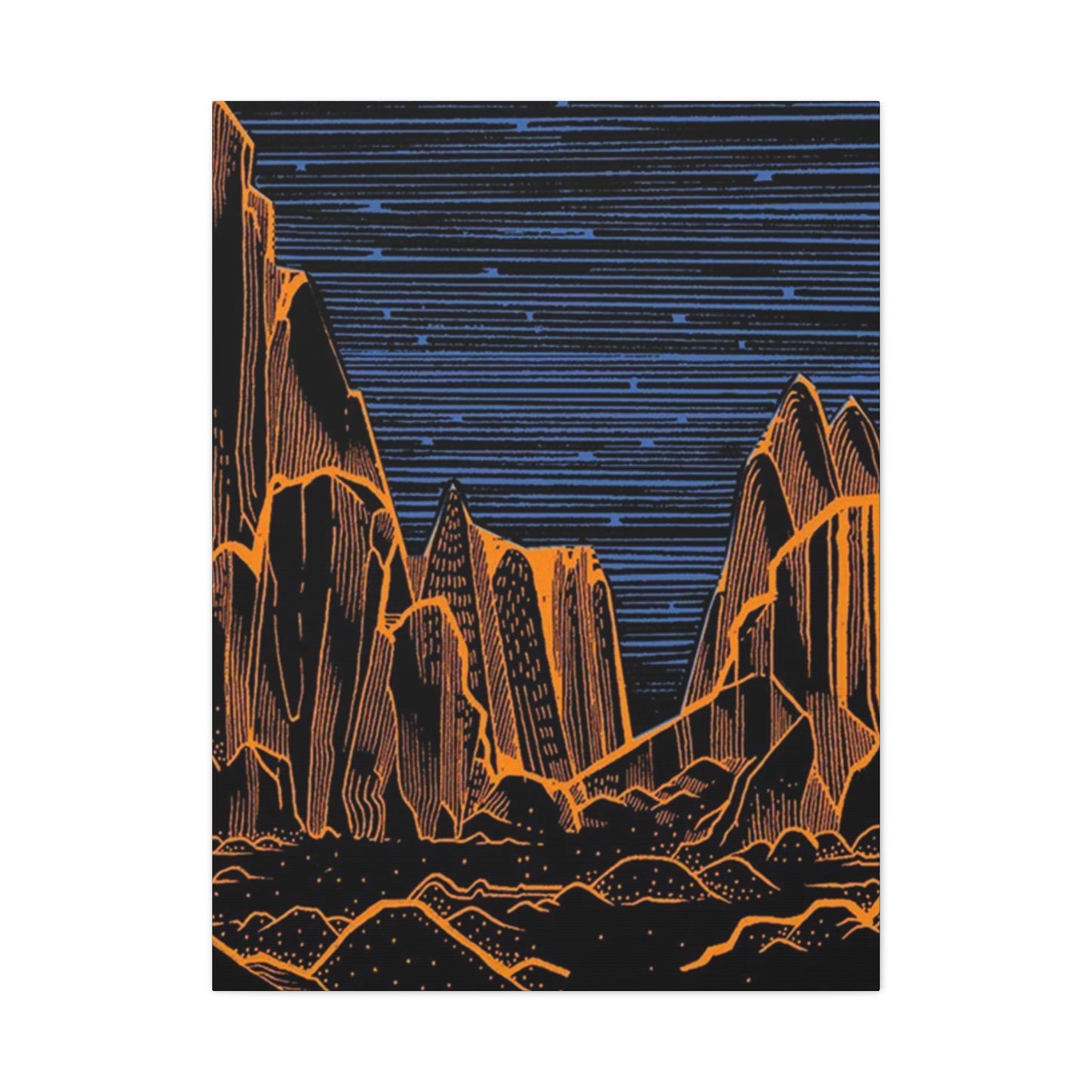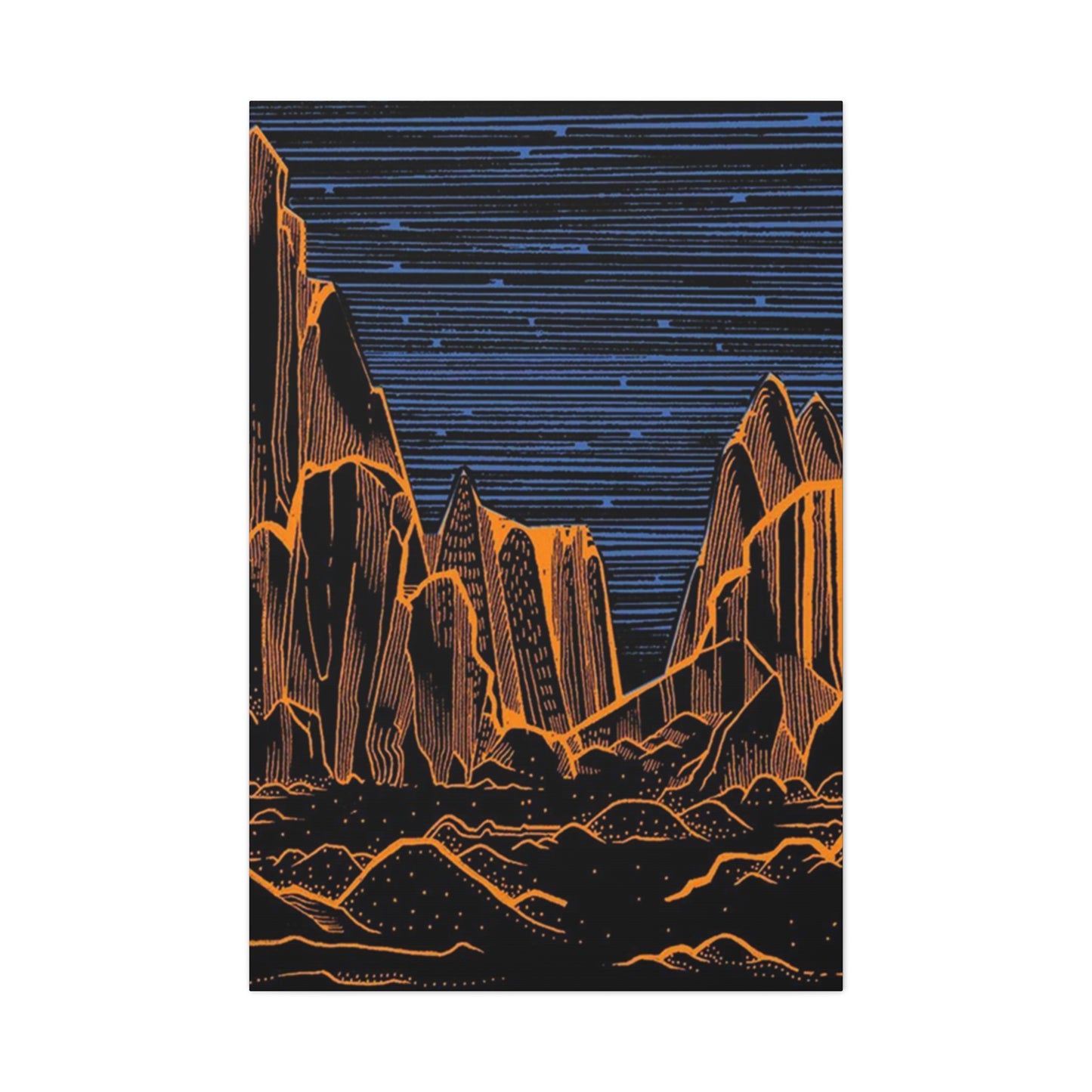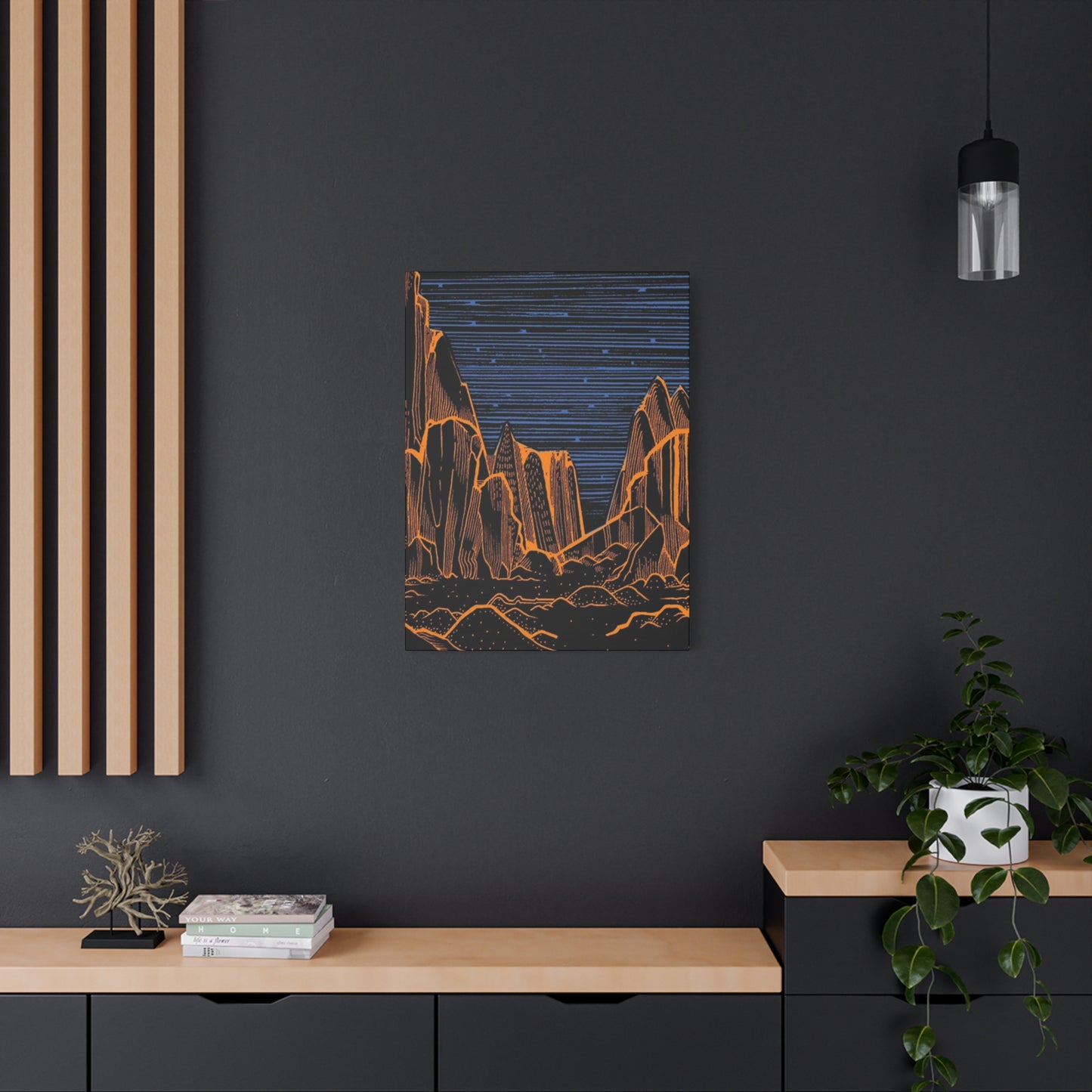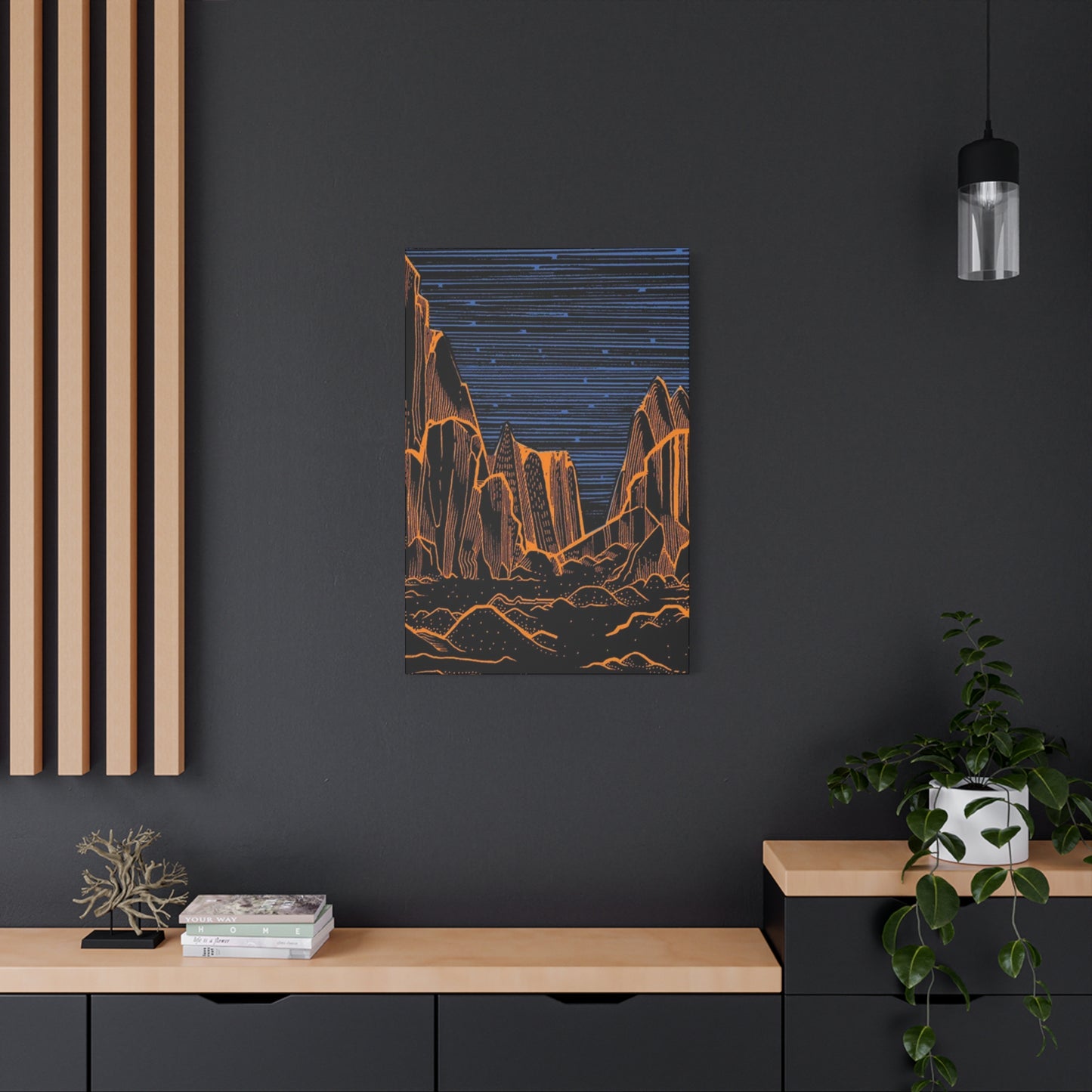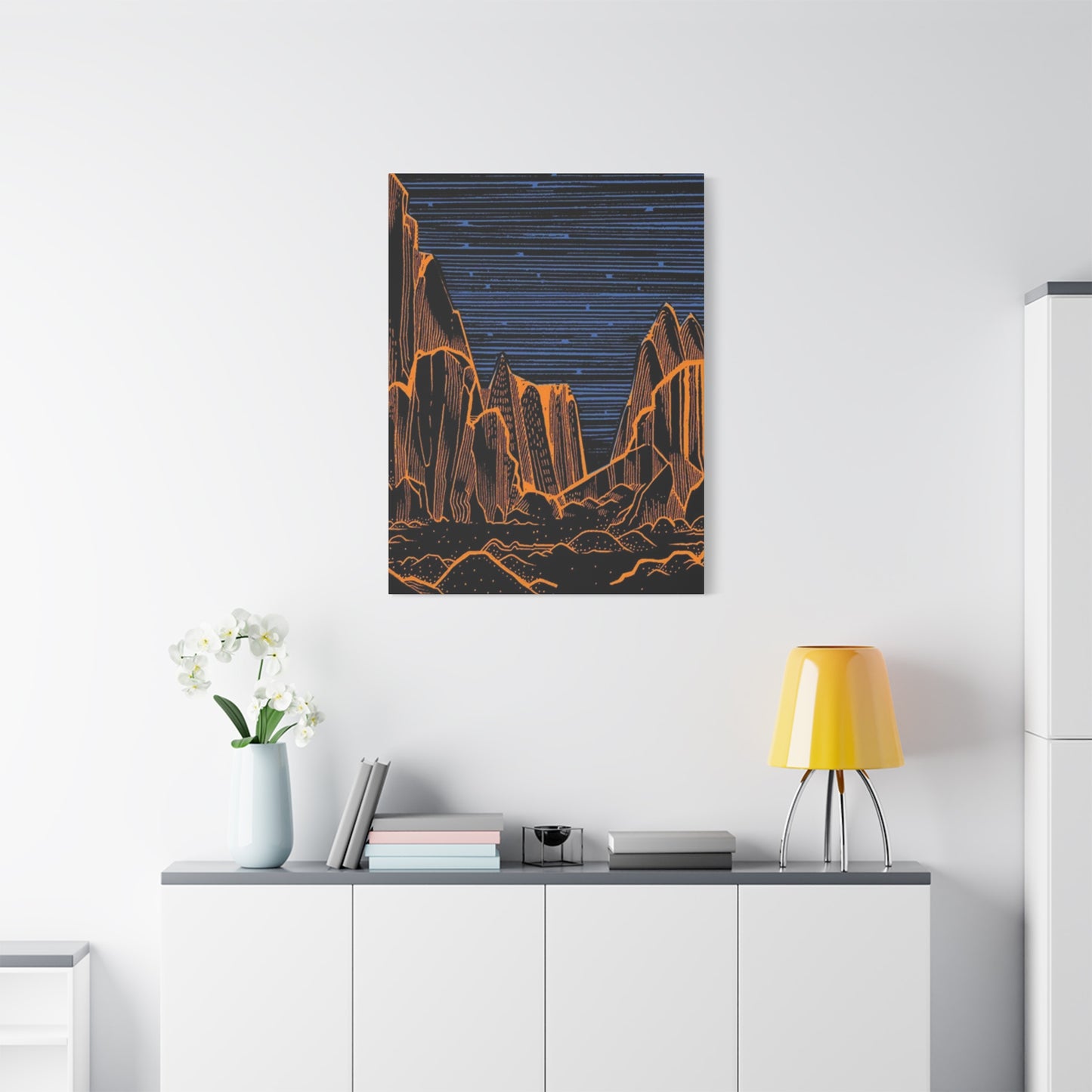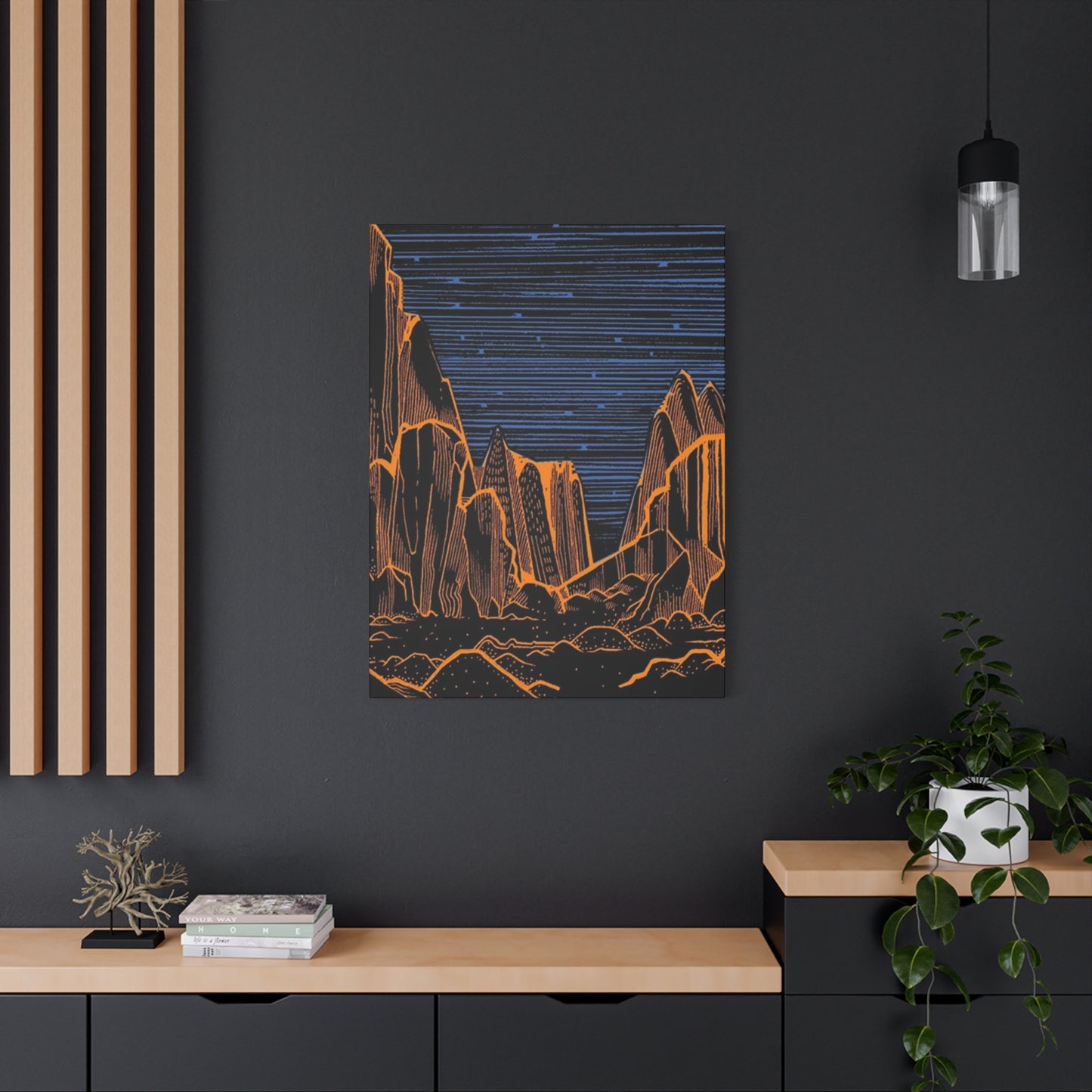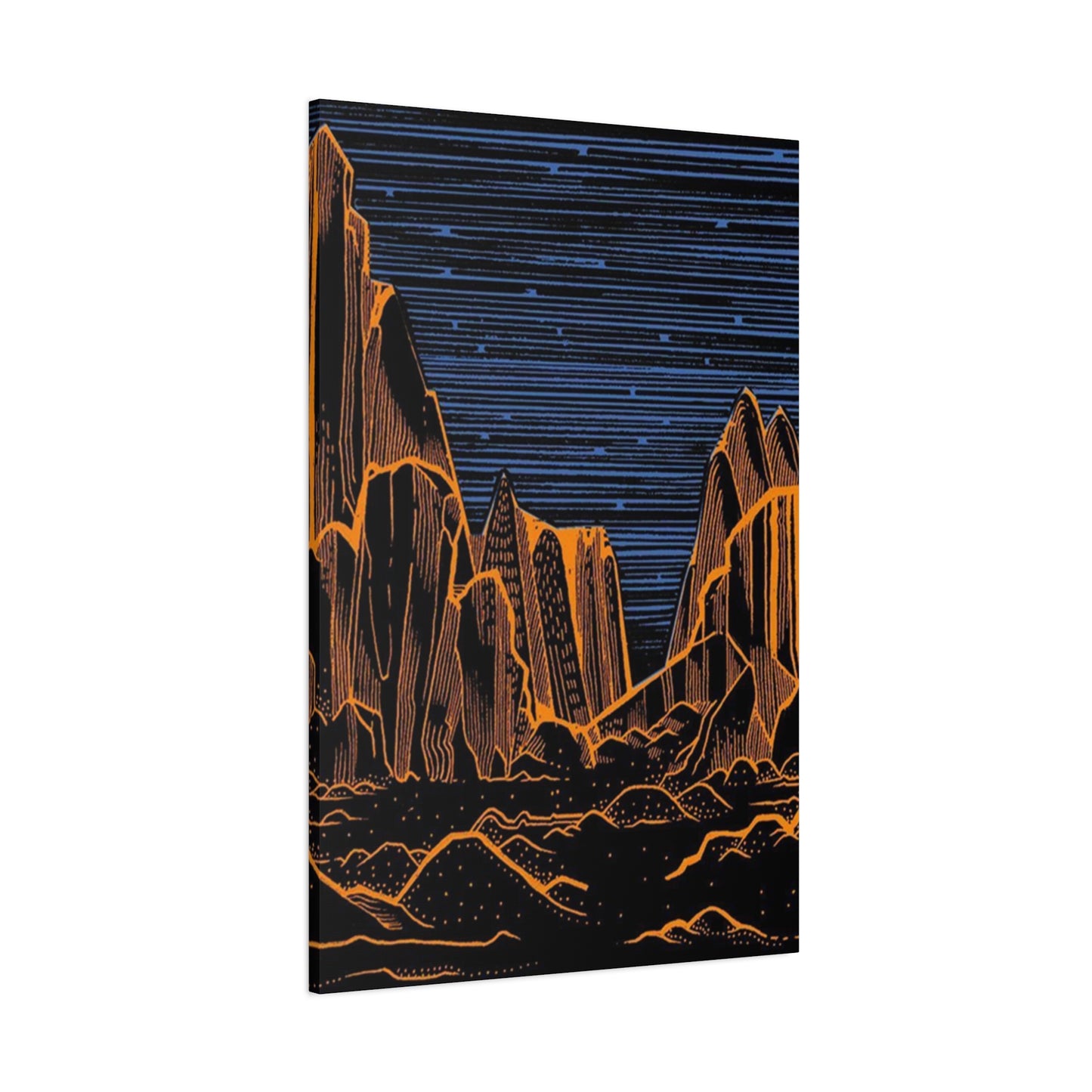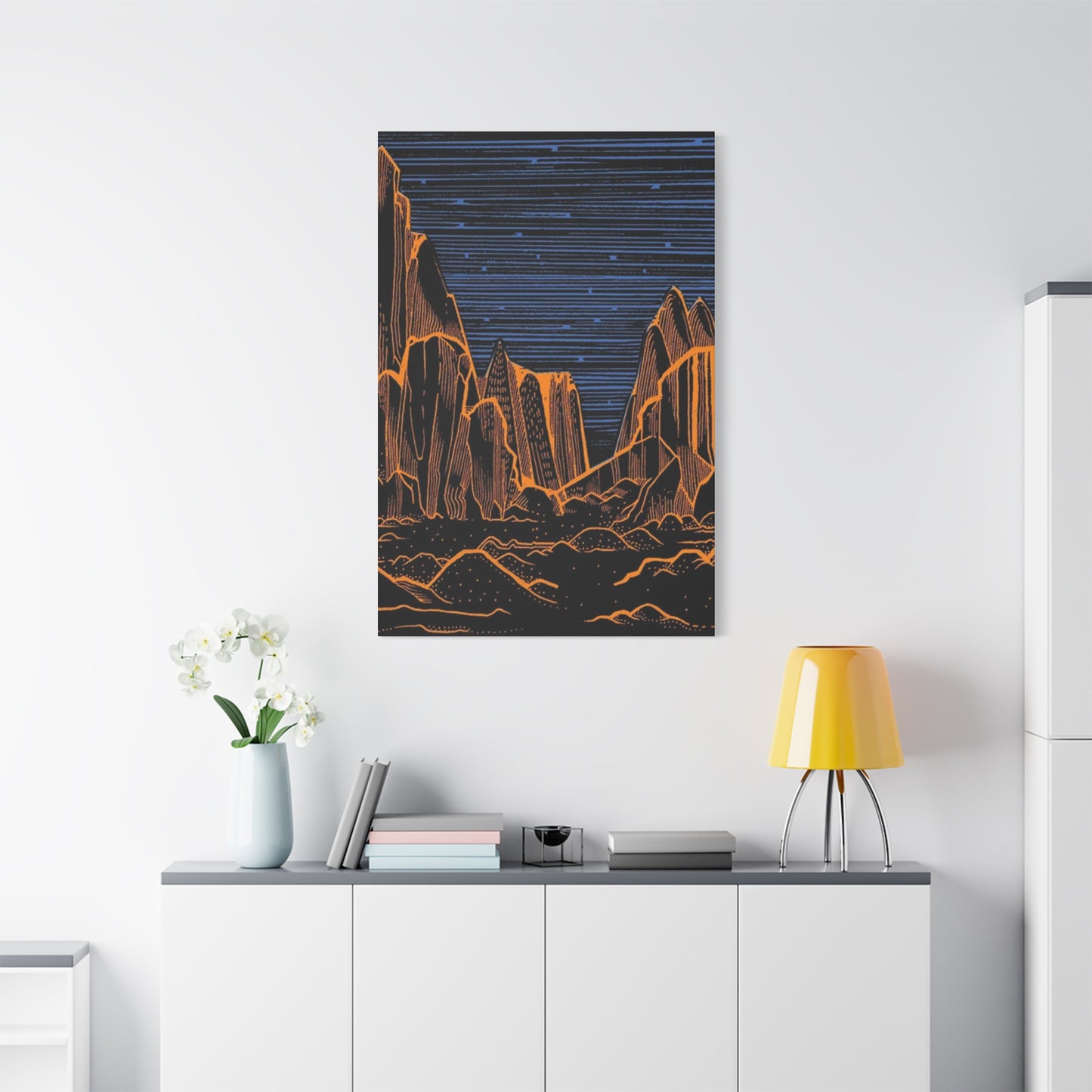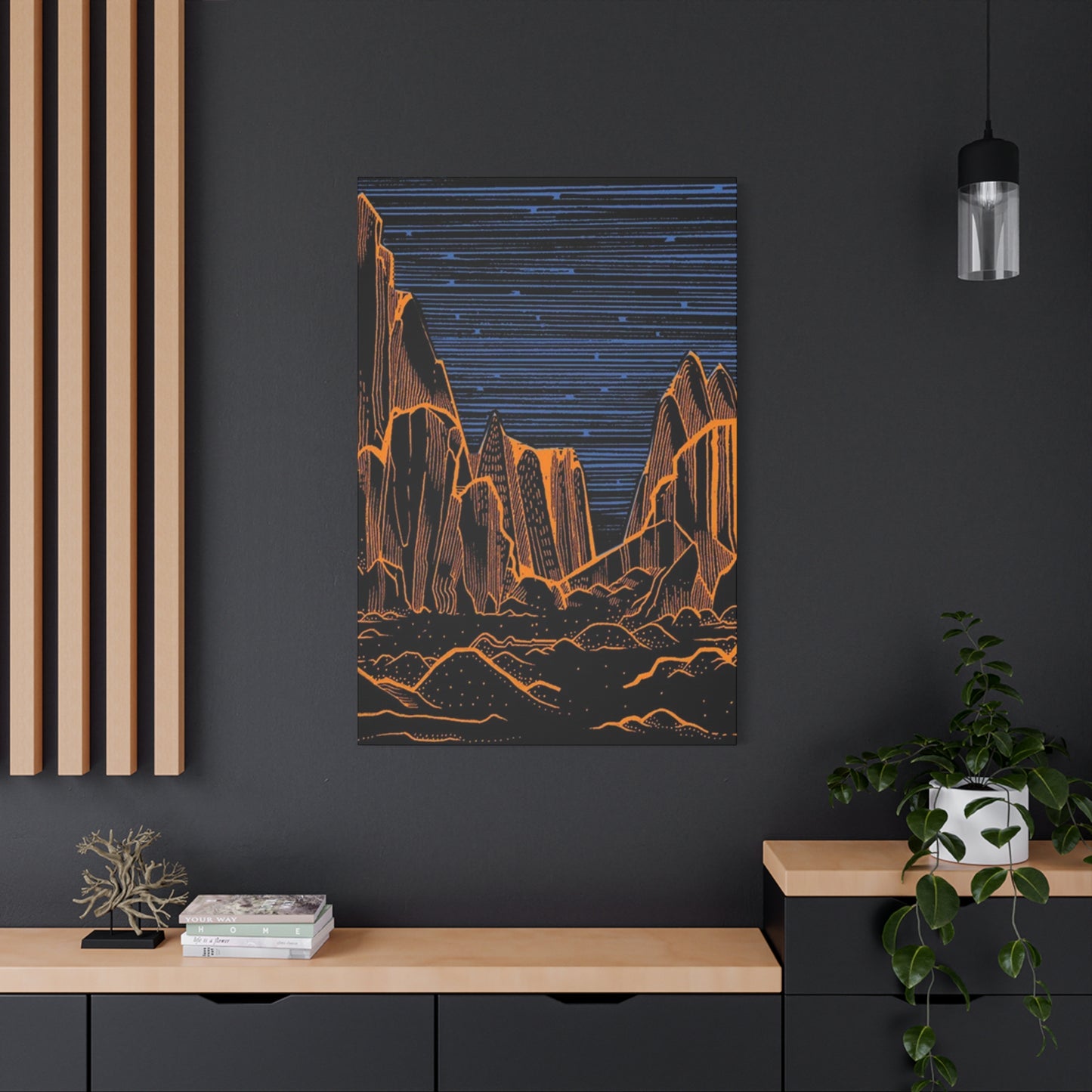Arizona Canyon Wall Art: Bringing Desert Beauty Into Your Home
Arizona's magnificent canyon landscapes offer endless inspiration for homeowners seeking to incorporate natural beauty into their interior spaces. These dramatic geological formations, carved by millions of years of erosion, present stunning visual opportunities that translate beautifully into wall art. The rich tapestry of colors found within Arizona's canyons ranges from deep crimson reds to warm ochre yellows, creating a palette that brings warmth and earthiness to any room.
The appeal of canyon wall art lies in its ability to transport viewers to these majestic locations without leaving the comfort of their homes. Each piece serves as a window to the wilderness, offering a daily reminder of nature's incredible artistry. Whether displayed in a living room, bedroom, or office space, canyon artwork creates an atmosphere of tranquility and connection to the natural world.
Artists who specialize in canyon landscapes often focus on capturing the interplay of light and shadow that makes these formations so captivating. The way sunlight filters through narrow slot canyons, creating ethereal beams of light, or how the setting sun illuminates massive rock walls with a golden glow, provides endless artistic possibilities. These natural phenomena translate beautifully into various art mediums, from photography and painting to digital art and mixed media installations.
The textures found within canyon walls offer another dimension to consider when selecting wall art. The smooth, wave-like patterns carved by water in slot canyons contrast beautifully with the rough, weathered surfaces of exposed cliff faces. These varied textures can be emphasized through different artistic techniques, creating pieces that engage viewers both visually and emotionally.
Canyon wall art also serves as an excellent conversation starter, often prompting guests to share their own experiences with Arizona's natural wonders or inspiring them to plan future adventures. The emotional connection people feel to these landscapes makes canyon art more than mere decoration; it becomes a meaningful part of the home's atmosphere and the family's story.
When considering canyon wall art, it's important to think about the specific mood and energy you want to create in your space. Some canyon scenes evoke feelings of adventure and exploration, while others promote serenity and contemplation. The key is selecting pieces that resonate with your personal connection to these incredible landscapes and complement your existing decor.
Showcasing Arizona's Canyon Beauty Through Interior Design
The art of incorporating Arizona's canyon landscapes into home decor requires careful consideration of both aesthetic and emotional elements. These natural masterpieces offer a unique opportunity to bring the Southwest's rugged beauty indoors, creating spaces that feel both sophisticated and grounded in nature. The key to successful canyon-themed interior design lies in understanding how these landscapes can enhance rather than overwhelm your living spaces.
Canyon imagery works particularly well in homes that embrace natural materials and earth-tone color schemes. The organic shapes and warm hues found in canyon photography and paintings complement wooden furniture, stone accents, and leather upholstery beautifully. This creates a cohesive design aesthetic that feels authentic and intentional rather than forced or theme-heavy.
The scale of canyon art plays a crucial role in its impact within a room. Large-format pieces can serve as dramatic focal points, commanding attention and creating a sense of grandeur that mirrors the actual experience of standing before these massive geological formations. Smaller pieces, when grouped thoughtfully, can create intimate vignettes that invite closer inspection and contemplation.
Lighting considerations are essential when displaying canyon art, as these landscapes are defined by their relationship with light. Natural lighting that changes throughout the day can bring canyon artwork to life, revealing different details and moods as shadows shift and colors transform. Artificial lighting should be carefully planned to highlight the artwork's best features without creating glare or washing out subtle color variations.
The emotional impact of canyon art extends beyond visual appeal, often serving as a source of inspiration and calm in busy household environments. These images can transport viewers mentally to peaceful outdoor spaces, providing a brief respite from daily stresses and reconnecting them with nature's healing presence.
Professional interior designers often recommend using canyon art as a starting point for room design, allowing the natural color palette and organic forms to guide decisions about complementary furnishings and accessories. This approach ensures that the artwork feels integrated into the overall design scheme rather than added as an afterthought.
The versatility of canyon imagery allows it to work in various design styles, from rustic lodge aesthetics to contemporary minimalist spaces. The key is selecting pieces and presentation methods that align with your overall design vision while allowing the natural beauty of the canyon landscapes to shine through.
Premium Canyon Photography for Interior Wall Display
Professional canyon photography represents one of the most popular and impactful ways to incorporate Arizona's natural beauty into home decor. These carefully crafted images capture the essence of the desert's most spectacular geological formations, offering viewers a window into landscapes that may be difficult to visit in person. The technical skill required to photograph canyons effectively, combined with the artistic vision needed to compose compelling images, results in artwork that can transform any interior space.
The best canyon photography for wall display demonstrates mastery of both technical camera work and artistic composition. Photographers must understand how to work with challenging lighting conditions, often dealing with extreme contrasts between bright sky and dark canyon floors. The resulting images showcase the dramatic interplay of light and shadow that defines these landscapes, creating visual interest that draws viewers into the scene.
Color reproduction becomes critical when selecting canyon photography for interior use. The subtle variations in rock coloration, from deep burgundy to pale peach, must be accurately captured and reproduced to maintain the artwork's impact and authenticity. High-quality printing processes and archival materials ensure that these colors remain vibrant and true over time, protecting your investment in quality art.
The composition of canyon photographs varies widely, from sweeping panoramic views that capture the grand scale of these formations to intimate close-ups that reveal intricate rock patterns and textures. Each approach offers different benefits for interior design, with panoramic views creating drama and expansiveness while detailed shots add sophistication and contemplative qualities to a space.
Many professional canyon photographers spend years developing relationships with specific locations, returning repeatedly to capture different moods, seasons, and lighting conditions. This dedication results in bodies of work that reveal the ever-changing character of these seemingly static landscapes, offering homeowners multiple options for creating dynamic art collections.
The printing and presentation of canyon photography requires careful attention to detail. Professional-grade papers and inks ensure longevity and color accuracy, while proper framing protects the artwork and enhances its visual impact. Museum-quality materials may represent a significant investment, but they ensure that the artwork will maintain its beauty and value for decades.
When selecting canyon photography for your home, consider both the technical quality of the image and its emotional resonance. The most effective pieces combine technical excellence with artistic vision, creating images that not only document these incredible landscapes but interpret them in ways that speak to viewers on a deeper level.
Incorporating Desert Color Schemes in Canyon-Themed Wall Prints
The color palette of Arizona's canyon landscapes provides a rich foundation for creating harmonious interior design schemes that feel both warm and sophisticated. These natural hues, developed over millions of years through geological processes, offer a time-tested combination of colors that work beautifully together in residential and commercial spaces. Understanding how to leverage these desert colors effectively can transform any room into a space that feels connected to the natural world.
The dominant colors in canyon landscapes typically include various shades of red, orange, yellow, and brown, ranging from deep rust tones to pale cream colors. These warm hues create an inviting atmosphere that makes spaces feel cozy and welcoming. When selecting canyon wall prints, consider how these colors will interact with your existing furnishings and architectural elements to create a cohesive overall design.
Complementary colors play an important role in canyon-themed decor, with cool blues and greens providing natural contrasts that prevent the warm desert palette from becoming overwhelming. These accent colors can be found in the shadows of canyon walls, reflected light from water sources, or vegetation that grows in protected canyon environments. Incorporating these cooler tones through accessories or secondary artwork helps create visual balance and interest.
The intensity of desert colors can be adjusted through artistic interpretation and printing techniques. Some canyon art emphasizes the vibrant, saturated colors that appear during golden hour lighting, while other pieces focus on the subtle, muted tones that characterize these landscapes during different times of day. Understanding your space's lighting conditions and overall mood will help you select pieces with appropriate color intensity.
Seasonal variations in canyon colors provide opportunities for creating dynamic art displays that can be rotated throughout the year. Spring brings fresh green accents from new plant growth, summer intensifies the warm rock tones, autumn adds golden highlights, and winter can create dramatic contrasts with occasional snow cover. This natural variation allows for flexible decorating approaches that keep spaces feeling fresh and connected to the changing seasons.
The psychological effects of desert colors have been well-documented, with warm earth tones promoting feelings of stability, comfort, and connection to nature. These colors can help create environments that feel grounding and peaceful, making them particularly suitable for spaces designed for relaxation and contemplation.
Professional color matching services can help ensure that canyon wall prints coordinate effectively with existing room elements. This attention to color harmony prevents the common mistake of selecting artwork based solely on subject matter without considering how it will integrate into the broader design scheme.
Sources for Authentic Arizona Canyon Artwork
Finding genuine, high-quality Arizona canyon artwork requires knowing where to look and what to look for in terms of authenticity and artistic merit. The popularity of Southwest-themed decor has led to a proliferation of mass-produced prints and reproductions that may lack the quality and character of original artwork or limited-edition pieces. Discerning buyers should focus on sources that specialize in authentic regional art and maintain high standards for both artistic and production quality.
Local galleries in Arizona communities often represent artists who have deep connections to the region's landscapes and can provide authentic interpretations of canyon scenery. These establishments typically offer original paintings, limited-edition prints, and exclusive photographic works that cannot be found elsewhere. Building relationships with reputable galleries also provides access to emerging artists and special exhibitions that feature canyon-themed artwork.
Artist cooperatives and collectives provide another excellent source for authentic canyon art, often featuring work by multiple artists who share a passion for Arizona's natural landscapes. These organizations frequently offer more affordable options than high-end galleries while maintaining quality standards and ensuring that artists receive fair compensation for their work.
Online platforms have expanded access to authentic canyon artwork, but buyers must exercise caution to ensure they are purchasing genuine pieces rather than unauthorized reproductions. Reputable online art retailers provide detailed provenance information, high-resolution images, and clear return policies that protect buyers' investments. Artist websites and social media profiles offer direct access to creators and often feature exclusive works not available through other channels.
Art fairs and outdoor markets throughout Arizona provide opportunities to meet artists in person and learn about their creative processes and connection to the landscapes they depict. These events often feature competitive pricing and the chance to commission custom pieces tailored to specific spaces or preferences.
Museum gift shops and visitor centers in Arizona's national and state parks often carry artwork created by artists with official relationships to these protected areas. These pieces frequently feature locations that are easily recognizable and hold special significance for visitors to these natural treasures.
When evaluating potential sources for canyon artwork, consider factors such as the seller's reputation, return policies, authentication procedures, and commitment to supporting local and regional artists. Investing in authentic artwork not only ensures quality but also supports the artistic community that helps preserve and celebrate Arizona's natural heritage.
Creative DIY Arizona Canyon Wall Art Projects
Creating your own Arizona canyon wall art offers a rewarding way to personalize your space while expressing your individual connection to these magnificent landscapes. DIY projects allow for complete creative control over color choices, composition, and style while often providing significant cost savings compared to purchasing professional artwork. The key to successful DIY canyon art lies in understanding the essential visual elements that make these landscapes so compelling and finding ways to recreate those elements using accessible materials and techniques.
Photography-based DIY projects offer an accessible entry point for creating personalized canyon art. Personal photographs taken during visits to Arizona's canyons can be enhanced through digital editing software to improve composition, color saturation, and contrast. These images can then be printed on various materials, from traditional photo paper to canvas or metal, creating custom pieces that hold special personal meaning and memories.
Painting techniques can be adapted to various skill levels, from simple watercolor washes that capture the flowing colors of slot canyons to more detailed acrylic or oil paintings that recreate specific rock formations and lighting effects. Beginning artists might start with abstract interpretations that focus on color and texture rather than precise geographical accuracy, gradually developing skills through practice and experimentation.
Mixed media approaches combine various materials and techniques to create textured, multi-dimensional canyon art. These projects might incorporate sand, small rocks, or other natural materials to add physical texture that mirrors the rough surfaces found in actual canyon environments. Layering techniques using different papers, fabrics, or paints can create depth and visual interest that engages viewers on multiple levels.
Digital art creation tools have made sophisticated canyon art accessible to creators with different technical backgrounds. Tablet-based drawing applications offer professional-level features for creating original canyon artwork, while photo manipulation software allows for creative reinterpretation of existing images. These digital tools also facilitate experimentation with different color schemes and compositions without the material costs associated with traditional art supplies.
Collage techniques offer another approach to DIY canyon art, combining elements from various sources to create unique compositions. These might include combining personal photographs with printed materials, natural elements, or decorative papers to create pieces that reflect individual perspectives on canyon landscapes.
The presentation of DIY canyon art requires the same attention to framing and display considerations as professional artwork. Quality framing materials and proper mounting techniques ensure that handmade pieces maintain their appearance and impact over time, protecting the investment of time and creative energy that went into their creation.
Expansive Canyon Wall Murals for Dramatic Interior Impact
Large-scale canyon wall murals represent the ultimate expression of bringing Arizona's natural grandeur into interior spaces. These room-transforming installations create immersive environments that can make viewers feel as though they are standing within the canyons themselves. The dramatic impact of well-executed canyon murals extends far beyond simple decoration, fundamentally altering the spatial perception and emotional atmosphere of any room.
The design process for canyon murals requires careful consideration of room dimensions, lighting conditions, and sight lines to create compositions that work effectively within the available space. Professional mural artists often conduct site visits to assess these factors and develop custom designs that maximize impact while respecting the room's architectural features and functional requirements.
Color planning becomes critical in large-scale canyon murals, as colors that work well in small prints may become overwhelming when expanded to wall-size proportions. Skilled mural artists understand how to adjust color intensity and contrast to maintain visual appeal across large surfaces while ensuring that the finished mural enhances rather than dominates the space.
The technical execution of canyon murals requires specialized materials and techniques designed to withstand the challenges of large-scale application. High-quality paints, primers, and sealers ensure that the mural maintains its appearance over time, while proper surface preparation prevents issues such as peeling, fading, or color shifting that can compromise the artwork's longevity.
Lighting design plays a crucial role in the success of canyon murals, as these large-scale pieces require even illumination to prevent unwanted shadows or glare that can disrupt the visual experience. Professional lighting consultants can recommend fixtures and placement strategies that enhance the mural's impact while providing adequate general room lighting.
The immersive quality of canyon murals makes them particularly effective in spaces designed for relaxation and contemplation, such as meditation rooms, spas, or private retreats. The sense of being surrounded by natural beauty can promote stress reduction and mental well-being, making these installations valuable additions to therapeutic environments.
Digital printing technology has expanded options for creating canyon murals, allowing for reproduction of high-resolution photographic images at wall scale with exceptional detail and color accuracy. These printed murals offer alternatives to hand-painted options while maintaining professional quality and visual impact.
Professional Framing Techniques for Canyon Landscape Artwork
The presentation of canyon landscape artwork through professional framing significantly impacts both the visual appeal and longevity of these pieces. Proper framing serves multiple functions: protecting the artwork from environmental damage, enhancing its aesthetic impact, and integrating it seamlessly into the overall interior design scheme. Understanding the various framing options and techniques available helps ensure that canyon art receives the presentation it deserves.
Material selection for frames should complement the natural, earthy qualities inherent in canyon imagery. Wood frames in warm tones such as walnut, cherry, or reclaimed barn wood create harmonious pairings with the organic colors found in canyon landscapes. Metal frames in bronze, copper, or brushed gold finishes can add sophistication while maintaining connection to the desert's mineral-rich environment.
Matting choices play a crucial role in the overall presentation of canyon artwork, providing visual breathing space around the image while protecting it from direct contact with the frame glass. Neutral mat colors such as cream, warm gray, or soft beige allow the artwork to remain the focal point while adding professional polish to the presentation. Colored mats in earth tones can enhance specific colors within the artwork but should be chosen carefully to avoid overwhelming the piece.
Conservation framing techniques become particularly important for valuable or irreplaceable canyon artwork. Acid-free materials, UV-protective glass, and proper mounting methods help ensure that the artwork maintains its original appearance and condition over time. These investments in quality framing materials and techniques protect both the artistic and financial value of the pieces.
The size relationship between artwork and frame requires careful consideration to achieve balanced, professional-looking results. Oversized frames can overwhelm smaller pieces, while frames that are too small may not provide adequate visual weight for larger artworks. Professional framers can provide guidance on proportions that enhance the artwork's impact within specific room contexts.
Glass selection offers various options for protecting and presenting canyon artwork. Standard glass provides basic protection and clarity, while museum-quality glass eliminates reflections and provides superior UV protection. Specialty glasses are available for specific situations, such as non-reflective options for brightly lit spaces or shatter-resistant varieties for high-traffic areas.
The mounting and spacing within frames affects both the artwork's appearance and its long-term preservation. Proper mounting techniques prevent the artwork from coming into direct contact with the glass while ensuring it remains flat and properly positioned. Adequate spacing allows for natural expansion and contraction of materials while preventing damage from humidity changes.
Balancing Contemporary and Traditional Canyon Wall Art Styles
The intersection of modern design sensibilities with traditional canyon imagery creates exciting opportunities for sophisticated interior design approaches. This balance requires careful consideration of how classic Southwest aesthetics can be reinterpreted through contemporary artistic techniques and presentation methods. Success in mixing these styles depends on understanding the essential elements that define both approaches and finding ways to honor the timeless appeal of canyon landscapes while embracing current design trends.
Contemporary interpretations of canyon art often emphasize abstract elements, focusing on color, form, and texture rather than literal representation. These pieces might isolate specific visual elements from canyon landscapes, such as the flowing lines of water-carved rock or the geometric patterns created by layered sedimentary deposits. This abstraction allows the artwork to function effectively in modern minimalist interiors while maintaining connection to the natural source material.
Traditional canyon art typically emphasizes realistic representation and often includes elements such as wildlife, vegetation, and atmospheric effects that place the geological formations within their broader environmental context. These pieces appeal to viewers who prefer artwork that clearly depicts recognizable landscapes and tells specific stories about place and experience.
The fusion of contemporary and traditional approaches can create unique artistic expressions that appeal to diverse tastes while offering fresh perspectives on familiar subjects. This might involve traditional painting techniques applied to unusual compositions, or contemporary materials used to create classic landscape scenes. The key is maintaining respect for both artistic traditions while exploring new possibilities for creative expression.
Color treatment provides another avenue for balancing contemporary and traditional elements in canyon art. Traditional pieces often emphasize the natural color palette found in these landscapes, while contemporary interpretations might push colors toward more saturated or unexpected combinations. Finding middle ground that honors natural beauty while embracing artistic innovation can create pieces that feel both timeless and current.
Presentation methods offer opportunities for bridging contemporary and traditional aesthetics through framing choices, installation techniques, and integration with surrounding decor elements. Modern floating frames might showcase traditional paintings in fresh ways, while classic framing techniques could ground contemporary abstract pieces and make them more accessible to traditional design sensibilities.
The scale and arrangement of artwork collections can also reflect this balance between old and new. Grouping smaller traditional pieces alongside larger contemporary works, or creating gallery walls that mix styles and periods, demonstrates sophisticated collecting sensibilities while creating visual interest through contrast and complement.
Ethereal Arizona Canyons Rendered in Watercolor Artistry
Watercolor painting offers a uniquely suited medium for capturing the ethereal, dreamlike qualities that make Arizona's canyons so spiritually moving and visually compelling. The fluid nature of watercolor paints mirrors the flowing forms carved by water through these rock formations over millions of years, creating natural harmony between medium and subject matter. This artistic approach emphasizes the luminous, translucent qualities of light filtering through narrow canyon passages, transforming solid rock into seemingly glowing, otherworldly environments.
The technical challenges of watercolor painting align beautifully with the visual characteristics of canyon landscapes. The medium's tendency toward soft edges and gradual color transitions perfectly captures the way morning mist settles into canyon depths or the subtle gradations of color that occur as sunlight moves across textured rock surfaces throughout the day. These natural watercolor effects require minimal manipulation to achieve results that feel authentic and true to the actual experience of being within these spaces.
Professional watercolor artists who specialize in canyon subjects often spend considerable time studying the behavior of light within these environments, understanding how the confined spaces create unique lighting conditions that differ dramatically from open landscape settings. This knowledge informs their artistic choices regarding color mixing, wet-on-wet techniques, and the strategic placement of highlights that bring their canyon watercolors to life.
The spontaneous quality inherent in watercolor painting mirrors the sense of discovery that characterizes exploration of hidden canyon spaces. Just as hikers never know exactly what geological wonders await around the next bend, watercolor artists must embrace the unpredictable ways their paints interact with water and paper. This element of chance often produces happy accidents that enhance the mystical, magical qualities associated with canyon environments.
Color theory plays a particularly important role in successful canyon watercolors, as the warm earth tones must be carefully balanced to avoid muddy or overpowering results. Understanding how different pigments interact when wet, and how colors change as they dry, allows artists to achieve the luminous quality that makes canyon landscapes so captivating. The transparency of watercolor also permits layering techniques that build depth and complexity while maintaining the fresh, spontaneous appearance that defines the medium.
The emotional impact of watercolor canyon art often exceeds that of more literal photographic or detailed painted representations. The medium's inherent softness and fluidity trigger psychological responses that evoke feelings of peace, wonder, and spiritual connection. These qualities make watercolor canyon art particularly suitable for spaces designed for meditation, relaxation, or contemplation.
Canyon Wall Art Applications for Living Room Environments
Living rooms serve as the primary gathering spaces in most homes, making them ideal locations for displaying canyon wall art that can be appreciated by both residents and guests. The scale and grandeur of canyon landscapes translate beautifully to living room settings, where larger wall surfaces can accommodate substantial artworks that make dramatic design statements. The warm, earthy colors typical of canyon art also complement the comfortable, welcoming atmosphere that most homeowners want to create in their living spaces.
The focal wall concept works particularly well with canyon art in living room settings. A single large piece or carefully arranged grouping of canyon-themed artwork can anchor the entire room's design scheme while providing a natural conversation starter for social gatherings. The positioning of this focal wall should consider sight lines from various seating areas to ensure that the artwork can be appreciated from multiple perspectives throughout the room.
Color coordination between canyon art and living room furnishings requires thoughtful planning to achieve cohesive, sophisticated results. The natural earth tones found in canyon imagery work beautifully with neutral furniture fabrics and natural materials such as leather, wood, and stone. These combinations create layered, textured environments that feel both elegant and comfortable, avoiding the sterile appearance that can result from overly matched color schemes.
Lighting considerations become particularly important in living rooms, where artwork must look appealing under various conditions ranging from bright daytime natural light to intimate evening artificial illumination. Canyon art's relationship with light as subject matter makes it particularly responsive to changing lighting conditions, often revealing different details and moods as illumination shifts throughout the day.
The scale of canyon art in living rooms should be proportional to both the wall space and the overall room dimensions. Oversized pieces can create dramatic impact in large living rooms with high ceilings, while smaller pieces might be more appropriate for intimate conversation areas or rooms with lower ceiling heights. Professional designers often recommend that artwork should occupy between 60-75% of the available wall space for optimal visual impact.
Furniture arrangement should complement rather than compete with canyon wall art displays. Seating positions that allow for comfortable viewing of the artwork enhance the overall room experience, while furniture heights should be considered to prevent blocking important visual elements of the displayed pieces. The goal is creating harmony between functional and aesthetic elements that makes the living room both beautiful and livable.
Vintage Versus Contemporary Arizona Canyon Print Styles
The artistic interpretation of Arizona's canyon landscapes has evolved significantly over the past century, creating distinct stylistic approaches that appeal to different aesthetic preferences and design sensibilities. Understanding the characteristics that define vintage versus contemporary canyon art helps collectors and decorators make informed choices that align with their personal tastes and interior design goals. Each approach offers unique advantages and can contribute differently to the overall atmosphere and character of interior spaces.
Vintage canyon art, typically created between the 1920s and 1970s, often reflects the romanticism and sense of adventure that characterized early tourism to the American Southwest. These pieces frequently emphasize the dramatic, almost mythical qualities of canyon landscapes, often including human figures or pack animals to provide scale and narrative context. The color palettes tend toward warm, saturated hues that emphasize the golden hour lighting conditions that make these landscapes most photogenic.
The artistic techniques employed in vintage canyon art often show influence from various art movements of their respective eras. Works from the 1920s and 1930s might display Art Deco stylization, while pieces from the 1950s and 1960s could incorporate mid-century modern design elements. These historical influences make vintage canyon art valuable not only as landscape representation but also as artifacts of American artistic and cultural history.
Contemporary canyon art embraces a broader range of artistic approaches, from photorealistic representation enabled by advanced camera technology to abstract interpretations that focus on specific visual elements such as color, texture, or form. Modern artists often bring environmental awareness and conservation consciousness to their work, creating pieces that not only celebrate natural beauty but also advocate for the protection of these fragile ecosystems.
The technical quality of contemporary canyon art benefits from advances in both creation and reproduction technologies. High-resolution digital photography, sophisticated printing processes, and improved pigments and papers result in artworks that can maintain their visual impact and color accuracy for decades. These technical improvements have democratized access to high-quality canyon art while expanding creative possibilities for artists.
Market considerations differ significantly between vintage and contemporary canyon art. Vintage pieces, particularly those by recognized artists or from important historical periods, often appreciate in value and may represent solid investment opportunities. Contemporary works typically offer more affordable entry points for collectors while providing access to current artistic interpretations and techniques.
The integration of vintage versus contemporary canyon art into interior design schemes requires different approaches. Vintage pieces often work best in settings that embrace traditional or eclectic design aesthetics, while contemporary works adapt more easily to modern minimalist or transitional interiors. Understanding these stylistic relationships helps ensure that the selected artwork enhances rather than conflicts with the overall design vision.
Arizona Canyon Photography as Expressive Wall Art
The elevation of canyon photography from simple documentation to expressive wall art represents a significant evolution in how these natural landscapes are perceived and appreciated within interior design contexts. Professional photographers who specialize in canyon imagery bring artistic vision and technical expertise that transform these geological formations into compelling visual narratives suitable for sophisticated residential and commercial environments.
The artistic merit of canyon photography depends heavily on the photographer's ability to see beyond the obvious tourist viewpoints and discover unique perspectives that reveal new aspects of familiar landscapes. This might involve exploring lesser-known canyon systems, working during unusual weather conditions, or employing specialized techniques that emphasize particular visual elements such as texture, pattern, or light quality.
Technical mastery becomes essential when working in the challenging environments found within canyon systems. Extreme lighting contrasts, confined spaces, and often unstable footing require photographers to have complete command of their equipment and techniques. The ability to work effectively under these conditions separates amateur documentation from professional artistic expression.
The interpretive aspect of canyon photography allows artists to infuse their personal vision and emotional response into what might otherwise be straightforward landscape documentation. This interpretation might emphasize the spiritual qualities of these spaces, their geological significance, or their role as refuges for wildlife and rare plant communities. These layered meanings add depth and interest that make the resulting artwork more engaging for long-term viewing.
Post-processing techniques have become increasingly sophisticated, allowing photographers to enhance and refine their canyon images in ways that were previously impossible. However, the most successful canyon photography maintains a balance between technical enhancement and natural authenticity, avoiding over-processing that might compromise the inherent beauty of the original landscapes.
The market for fine art canyon photography has expanded significantly as collectors and interior designers have come to appreciate the artistic potential of this medium. Limited edition prints, signed and numbered by the photographer, offer collectors the opportunity to own unique pieces that may appreciate in value while providing immediate aesthetic satisfaction.
The presentation of canyon photography as wall art requires the same attention to quality framing and display considerations as any other fine art medium. Museum-quality papers, archival inks, and conservation framing techniques ensure that these photographic artworks maintain their visual impact and monetary value over time.
Utilizing Canyon Art to Establish Natural Indoor Environments
The incorporation of canyon artwork into interior spaces serves as a powerful tool for creating environments that feel connected to the natural world, even in urban or completely artificial settings. This approach to interior design recognizes the psychological and emotional benefits of maintaining visual connections to natural landscapes, using art as a bridge between indoor comfort and outdoor inspiration. The success of this strategy depends on thoughtful selection and presentation of canyon imagery that truly captures the essence of these remarkable environments.
The psychological effects of viewing natural landscape imagery have been well-documented in environmental psychology research, with studies consistently showing that exposure to natural scenes can reduce stress, improve mood, and enhance overall well-being. Canyon art offers particularly powerful visual experiences due to the dramatic scale and unique beauty of these landscapes, creating opportunities for brief mental escapes that can provide significant psychological benefits throughout daily routines.
The color psychology associated with canyon imagery supports the creation of calming, grounding interior environments. The warm earth tones characteristic of these landscapes promote feelings of security and comfort, while the organic forms and natural textures provide visual relief from the geometric patterns and artificial materials that dominate most indoor spaces. This natural visual vocabulary helps create environments that feel more balanced and harmonious.
Seasonal considerations can enhance the natural quality of canyon-themed interiors, with artwork selections that reflect different times of year or weather conditions found in canyon environments. Spring images might emphasize the fresh green growth that appears after winter rains, while autumn pieces could showcase the golden light that characterizes this season in desert regions. This approach creates dynamic interior environments that change subtly throughout the year.
The integration of canyon art with other natural elements such as plants, natural materials, and water features can create layered environments that engage multiple senses and reinforce the connection to natural systems. Careful placement of artwork in relation to windows and natural light sources can enhance the illusion of looking out onto actual canyon landscapes.
The scale relationships within canyon-themed interiors should reflect the monumental character of these natural environments. Large-format artwork that commands attention and creates a sense of grandeur helps maintain the awe-inspiring quality that makes actual canyon visits so memorable. However, this must be balanced with the need to maintain comfortable, livable interior spaces.
Southwest Style Integration with Arizona Canyon Wall Art
The Southwest design aesthetic provides a natural framework for incorporating Arizona canyon wall art into interior spaces, as both share common roots in the region's cultural heritage and natural environment. This design approach celebrates the intersection of Native American, Spanish colonial, and contemporary American influences that have shaped the visual character of the American Southwest. Canyon art serves as both inspiration and validation for design choices that emphasize natural materials, warm colors, and organic forms.
Authentic Southwest style extends far beyond the stereotypical use of terra cotta pottery and geometric patterns, encompassing a sophisticated understanding of how architecture, furnishings, and artwork can work together to create environments that feel connected to their regional context. Canyon wall art contributes to this authenticity by providing visual connections to the actual landscapes that define the region's character and influence its cultural development.
The color relationships between canyon art and traditional Southwest design elements create opportunities for rich, layered interior schemes that avoid cliché while maintaining regional authenticity. The natural earth tones found in canyon imagery complement traditional Southwest colors such as sage green, turquoise blue, and deep burgundy, creating palettes that feel both timeless and contemporary.
Material compatibility between canyon art and Southwest design elements enhances the overall coherence of interior schemes. Natural materials such as adobe, stone, and reclaimed wood that are characteristic of Southwest architecture provide ideal backdrops for canyon artwork, while traditional textiles and handcrafted furnishings add layers of texture and cultural meaning.
The artistic traditions of the Southwest region include strong landscape painting and photography traditions that have documented and celebrated canyon environments for over a century. Incorporating work by regional artists into Southwest-style interiors creates connections to this cultural heritage while supporting contemporary artistic communities.
Architectural features common in Southwest design, such as vigas, nichos, and arched doorways, provide natural frameworks for displaying canyon artwork in ways that feel integrated rather than applied. These design elements can be used to create dedicated gallery spaces or intimate viewing areas that enhance the artwork's impact.
The outdoor living emphasis that characterizes Southwest lifestyle extends to interior design choices, with canyon art serving as visual bridges between indoor and outdoor spaces. Large windows, outdoor patios, and interior courtyards can be enhanced through strategic placement of canyon artwork that extends the visual experience and reinforces the connection to regional landscapes.
Abstract Artistic Interpretations of Arizona Canyon Landscapes
Abstract interpretations of Arizona canyon landscapes offer artists and art enthusiasts opportunities to explore the emotional and spiritual essence of these natural environments without being constrained by literal representation. This artistic approach focuses on capturing the feelings, energies, and visual impressions that canyons evoke rather than documenting their specific geographical features. The resulting artworks can be powerfully evocative while offering flexibility in how they integrate with various interior design schemes.
The process of abstracting canyon landscapes often begins with identifying the essential visual elements that make these environments distinctive. This might include the flowing, organic lines carved by water erosion, the layered patterns created by sedimentary deposits, or the dramatic contrasts between light and shadow found in narrow passages. Artists then interpret these elements through various techniques such as gestural brushwork, color field painting, or mixed media approaches.
Color abstraction provides particularly rich possibilities for canyon-inspired artwork, as the natural color relationships found in these landscapes can be intensified, simplified, or reimagined while maintaining their inherent harmony. Artists might isolate specific color combinations from canyon environments and explore them through non-representational compositions that capture the emotional impact of the original landscapes without depicting recognizable forms.
Texture plays a crucial role in abstract canyon art, with artists often incorporating physical materials or techniques that mirror the tactile qualities of rock surfaces. This might involve building up paint in layers to create relief effects, incorporating sand or other natural materials, or using specialized techniques that create surface variations reminiscent of weathered stone.
The emotional accessibility of abstract canyon art often exceeds that of literal representations, as viewers are invited to bring their own experiences and interpretations to the work rather than being directed toward specific narrative content. This open-ended quality makes abstract pieces particularly suitable for personal living spaces where individual response and long-term engagement are important considerations.
Contemporary art movements such as color field painting, gestural abstraction, and mixed media installation provide frameworks for creating canyon-inspired artwork that speaks to current artistic sensibilities while honoring the timeless appeal of these natural environments. Artists working in these traditions often find that canyon landscapes provide rich source material for exploring their chosen artistic approaches.
The market acceptance of abstract canyon art has grown significantly as collectors and interior designers have come to appreciate the sophistication and versatility these pieces offer. Abstract works often integrate more easily into contemporary interior designs while still providing the natural connection and regional character that make canyon imagery so appealing.
Conclusion
Arizona Canyon wall art offers a stunning way to bring the rugged, breathtaking beauty of the desert right into your home. Capturing the vibrant hues of red rocks, vast canyons, and sun-drenched landscapes, this style of artwork invites the spirit of the American Southwest to transform your living space with natural warmth and timeless elegance. Whether you’re drawn to the serene majesty of the Grand Canyon or the intricate textures of desert flora and rock formations, Arizona Canyon art provides an authentic connection to one of nature’s most awe-inspiring environments.
One of the most compelling aspects of Arizona Canyon wall art is its ability to evoke a deep sense of place and tranquility. The rich reds, oranges, and earthy browns typical of canyon landscapes create a warm, inviting palette that complements a variety of interior design styles—from rustic and southwestern to modern and minimalist. These pieces serve as both a focal point and a subtle backdrop, infusing rooms with the peaceful energy and expansive vistas characteristic of the desert. Whether displayed as large canvas prints, detailed photographs, or mixed-media creations, Arizona Canyon art invites viewers to experience the vastness and serenity of the desert indoors.
Beyond its visual appeal, Arizona Canyon wall art carries emotional and symbolic significance. The canyon landscape embodies resilience, natural beauty, and the passage of time—qualities that resonate with many who seek to create meaningful and inspiring living environments. By incorporating these elements into your décor, you invite a narrative of endurance and awe that transcends mere decoration, transforming your home into a space that encourages reflection and appreciation for the natural world.
Arizona Canyon art is also incredibly versatile in terms of placement and format. Whether you choose a dramatic panoramic print for your living room or a series of smaller images that highlight different aspects of desert life, there are countless ways to personalize your space. Complementing these artworks with southwestern textiles, pottery, or wood accents can further enhance the desert vibe and create a cohesive, immersive atmosphere.
In conclusion, Arizona Canyon wall art is an exceptional choice for anyone looking to bring the majesty and warmth of the desert into their home. Its rich colors, evocative imagery, and symbolic depth make it a powerful design element that connects indoor spaces with the natural beauty of the Southwest. By embracing Arizona Canyon art, you create a serene, inspiring environment that celebrates both nature’s grandeur and your personal style.


















